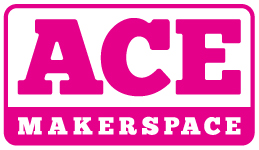Project & Design Lead: Rachel
Assisting: Anup, Drew
Our old sandwich board has been worn out to a point it needs replacing. Rachel has created a new design that is based on all the cool new art she’s created. This is mainly project space for design and asset files. Feel free to contact Rachel to be added to the project.
”’Front face design files:”’
Original vector art: [[Media:Signlayerd_ol crafty3.ai]]
CNC Router vectors: [[Media:Signlayerd_ol_r4.ai]]
CNC Router CAM file (VCarvePro): [[Media:Signlayerd_ol_r4.crv]]
”[NOTE: blargh, can’t upload arbitrary art files that aren’t of the very limited types supported by the wiki. working on it…]”
The front base layer will be cut on the CNC Router. The plan is to use 1/2" thick plywood as the foundation. It’s not clear what exterior grade plywood will be used but we’ll post an update once we visit Ashby or MacBeath.
Material Dimensions: 1/2" thick, 40" width, 44" height
1/4" downcut spiral cutter will be used for the profile cuts and also for the eye cutouts. These are all thru cuts. On the exterior cut tabs were added for workholding. Current toolpaths specify 3 external passes and a ramped spiral for the eyes.
1/16" upcut straight bit will be used for the etching of the letters. Depth of cut will be 1/16". Test cut images will be posted shortly.
Sample rendering of the CNC Router cuts is below. Grain orientation wasn’t configurable in the software so imagine it is turned 90 degrees!
[[File:SignBase_r4.jpg|600px|Sandwich Board Base Layer]]
6Aug2012 – first test etching using the 1/16" bit did produce the expected tear out.
[[File:LetterTest1.jpg|450px|Etching Test 1]][[File:LetterTest2.jpg|200px|Etching Test 2]][[File:LetterTest3.jpg|200px|Etching Tests 3]]
The cut was made on scrap 3/8" plywood that has been painted white. This seemed to be low quality exterior grade plywood. Letter interiors are often torn out. Outlines also see chip-out and all surface entry shows slight fuzzing and tear-out due to the upcut bit. Slower feed speed did seem to help (40 in/min was reduced to 20 in/min) some but did not eliminate the issues. Click each image for a higher resolution view. Finally, the bullet between the phone number and website seems out of place. In the source file it was equally spaced so there may be a alignment or coordinate issue in the exported g-code.
This test raises some interesting issues regarding how we actually fabricate the sign. What I had assumed would be a single router cut may need to be split into 2 steps. Here’s the idea I briefly discussed with MikeG. The first step would cut the outline and eyes. Then the sign would be painted it’s base color or finish. Then it would be returned to the bed and a new waste board would be clamped down ”on top”. The lettering would then be cut thru the top waste and into the sign board. This would reduce the tearout along the top surface and provide a template for easy painting of the lettering without worrying about avoiding the original base finish. The challenge will be determining how to secure the small interior islands like the center of the vowels. MikeG’s suggestion was to use the same "gerber film" that signmaking shops use to protect the surface but that will add to our costs and require a new bit to reduce/eliminate the tearout.
After some additional research, painting the surface, etching the letters, then doing a light sanding to remove the tearout on the surface. This means probably doing a fairly heavy top coat of paint so it’s not sanded thru. I’d still like to find a small diameter downcut bit but they seem to be uncommon or not made at all.
[[Category:Projects]]
